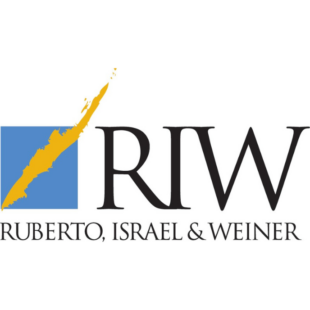On March 27, 2020, President Trump signed the Coronavirus Aid, Relief, and Economic Stability (“CARES”) Act (the “Act”), as approved by the Senate on March 26, 2020, and the House on March 27, 2020. This article is intended to focus on those provisions of Phase 3 of the federal COVID-19 stimulus package relative to the eligibility requirements, qualifying criteria, and ramifications of Small Business Act Section 7(a) loans for businesses.
Division A, Title I of the CARES Act entitled “Keeping American Workers Paid and Employed Act” (Sections 1101-1114 on pages 8-83) provides a framework for, among other things, the Paycheck Protection Program (the “Program”) which has been allocated $349 billion dollars to provide loans to business to assist with payroll related expenses incurred during the COVID-19 pandemic. In some cases, the debt will be wholly forgivable, subject to certain reductions in the event of employee reduction and compensation, as detailed below. A digest of the most relevant key provisions from Division A, Title I of the Act follows below.
Eligibility
In order to be eligible for the Program, companies must employ not more than the greater of: (i) 500 employees (i.e., individuals employed on a full-time, part-time, or other basis); or (ii) a standard number of employees for the industry in which a particular business operates, as determined by the Small Business Administration (“SBA”).
Individuals operating as a sole proprietor or independent contractor shall be eligible under the Program, so long as they submit supporting paperwork to establish such eligibility.
Notwithstanding anything to the contrary, businesses in the accommodation and food services industry employing more than 500 employees but not more than 500 employees per physical location of the business shall still be eligible for the Program. Businesses acting as franchises and assigned a franchise identifier code by the SBA, as well as businesses receiving financial assistance from a small business investment company, are similarly eligible for the Program.
When evaluating applicants, the only criteria the lender may consider are: (i) was the borrower in operation as of March 1, 2020; and (ii) did the borrower (a) have employees for whom the borrower paid salaries and payroll taxes or (b) pay independent contractors, as reported on a Form 1099-MISC?
Notwithstanding those limited criteria, potential borrowers will be required to make the following good faith certifications: (i) that the loan is necessitated by the uncertainty of the current economic conditions; (ii) that the funds will be used to retain workers, maintain payroll, or make appropriate payments for mortgages, rent, and utilities; (iii) that the subject application is not duplicative of an existing or prior application for funds to cover the same expenses; and (iv) during the period beginning February 15, 2020, through December 31, 2020, the Applicant has not received loan proceeds under the Program for the same expenses.
Loan Amounts
Each eligible business will be limited to the amount of money it can borrower from the SBA under the Program. Generally speaking, the maximum loan amount shall be the lesser of: (a) two and one-half (2.5) times the average total monthly payments by the applicant for Payroll Costs incurred during the one (1) year period before the date on which the loan is made; or (b) Ten million ($10,000,000) dollars.
For seasonal employers (a designation which shall be made by the SBA), the formula remains the same, except instead of average monthly payments for payroll over the prior year, seasonal employers shall use average total monthly payments for payroll costs for the 12-week period beginning February 15, 2019 (or March 1, 2019, at the applicant’s election) and ending June 30, 2019.
For purposes of the Act, payroll costs are limited to the sum of payments of any compensation with respect to employees that is a: (i) salary, wage, commission, or similar compensation; (ii) payment of cash tip or equivalent; (iii) payment for permitted leave; (iv) severance; (v) group health care benefit payments; (vi) retirement benefit payments; and (vii) payments of state and local payroll taxes.
For sole proprietors and independent contractors, payroll costs are limited to the sum of payments of any compensation to or income of, in an amount not more than $100,000 in one (1) year, as prorated for the period beginning February 15, 2020, and ending June 30, 2020.
Payroll costs shall not include: (i) compensation of an individual employee in excess of an annual salary of $100,000, as prorated for the period beginning February 15, 2020, and ending June 30, 2020; (ii) certain taxes imposed under the Internal Revenue Code; (iii) any compensation of an employee whose principal residence is outside of the United States; (iv) qualified sick leave wages for which credit is allowed under §7001 of the Families First Coronavirus Response Act; and (v) qualified family leave wages for which credit is allowed under §7003 of the Families First Coronavirus Response Act.
Approved Uses of Loan Proceeds
The loan proceeds originating from the Program are not a blank check for the recipient. In addition to such other uses as may be permitted under SBA rules and regulations, the proceeds of the Program loans are intended to be used for: (i) payroll costs; (ii) costs related to paid sick leave, medical leave, family leave, and costs associated with continuation of group health care benefits; (iii) employee compensation; (iv) payment of interest on any mortgage payments (specifically excluding principal); (v) rent; (vi) utilities; and (vii) interest on any other debt obligations incurred before February 15, 2020.
Loan Forgiveness
Subject to certain specific reductions relating to workforce continuity and compensation, a borrower lent proceeds under the Program can expect to have that portion of the loan utilized for Payroll Costs (including wages paid to tipped employees, as defined in the Fair Labor Standards Act) and payments of mortgage interest, rent, and utilities, forgiven under the terms of the Program.
Loan forgiveness for a borrower shall be reduced by a percentage equal to: (i) the average number of full-time equivalent employees per month during the eight (8) week period beginning on the origination date of the borrower’s Program loan divided by (ii) the borrower’s choice of (a) the average number of full-time equivalent employees per month employed from February 15, 2019, through June 30, 2019, OR (b) the average number of full-time equivalent employees per month employed from January 1, 2020, through February 29, 2020. Seasonal employees shall be required to use option (ii)(a) above.
Loan forgiveness shall similarly be reduced by any reduction during the eight (8) week period beginning on the origination date of the borrower’s Program loan in excess of twenty-five (25%) percent of compensation during the most recent full quarter in which the employee was employed before origination of the loan. For purposes of calculating loan forgiveness, only employees compensated in an amount not more than $100,000 on an annualized basis during 2019 shall be considered.
Notwithstanding the foregoing loan forgiveness reductions, in the event that a borrower reduced the number of full-time equivalent employees or reduced the compensation for one (1) or more employees during the period beginning February 15, 2020, and the date that is thirty (30) days following the enactment of the Act, then the borrower may negate said reductions eliminating either or both reductions by rehiring employees and/or reinstating prior salary/wages not later than June 30, 2020.
Borrowers must apply for loan forgiveness and provide documentation: (i) verifying the number of full-time equivalent employees on payroll and pay rates for the relevant periods (i.e., payroll tax filings reported to IRS and state income, payroll, and unemployment insurance filings); (ii) documentation verifying payment of payroll, mortgage obligations, lease obligations, and utility payments; (iii) certification that the documentation presented is true and the amount of requested forgiveness was used to retain employees and make permitted payments discussed herein; and (iv) such additional information as the SBA may request. Failure to provide the aforementioned documentation precludes loan forgiveness.
Any portion of a loan granted under the Program that does not qualify for loan forgiveness shall accrue interest at a rate not exceeding four (4%) percent per annum and have a maximum maturity date of ten (10) years, running from the date of application for loan forgiveness.
Additional Notes
Pursuant to the terms of the Program, lenders shall waive all personal guarantee and collateral requirements and lenders shall provide borrowers with complete payment deferment relief for principal and interest for a period of at least six (6) months, but not more than a year.
It should also be noted that absent a business’ failure to abide by the terms of the Program, the loans made pursuant to the Program will be non-recourse debt.
If you have any questions relating to particular aspects of the Program, please feel free to contact our office. As with all COVID-19 related legal developments, RIW will continue to provide updates and guidance relative to the CARES Act.
Michael J. Barone, Jr. is an attorney in Ruberto, Israel & Weiner’s Commercial Real Estate Group and can be reached at 617-570-3511 or mjb@riw.com.
For regular updates, follow RIW on LinkedIn, Twitter, and Facebook.




